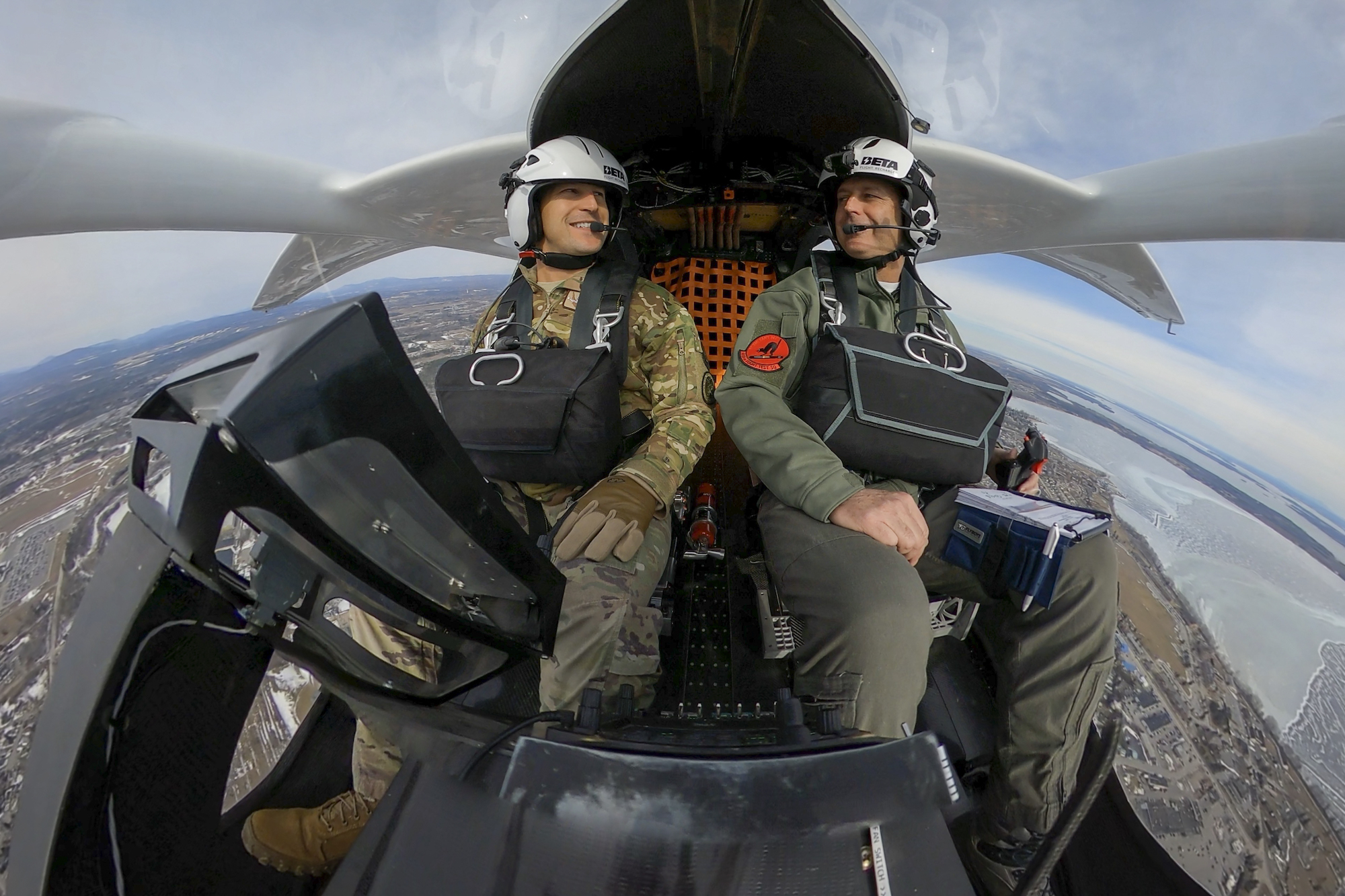

Last week, on the morning of Wednesday, March 9, an electric aircraft with a 50-foot wingspan called Alia took flight out of Plattsburgh, New York. The plane, powered by two motors driving a propeller in the rear, flew for about an hour. Later that day, it flew again. The Alia aircraft is an experimental flying machine that produces no emissions while in the air, and it’s made by a Vermont-based company called Beta Technologies. What made these flights notable is that for the first time for this company and others in an Air Force program called Agility Prime, at the controls and on board the aircraft were Air Force aviators who both have a long history as test pilots.
Beta isn’t the only company working on electric aircraft: A number of others are as well, such as Joby, Kitty Hawk, Wisk, and Archer. Those startups and others are in the process of creating planes that can take off and land vertically, like a helicopter, and then fly like typical airplanes, powered by batteries, motors, and propellers in different configurations. The industry term for these new experimental flying machines is eVTOLs, for electric vertical take-off and landing aircraft.
Beta and a number of other firms in the space are also part of an Air Force program called Agility Prime, an initiative that focuses on trying to help accelerate the work these companies are doing; it also gives the Air Force an inside look at what possible uses these new kinds of airplanes could serve for the military. “It allows us to take a look at these early prototypes from all the companies, and say, ‘Is there a military use case?’” says George Griffiths, a former F-16 and F-35 test pilot with the Air Force who also goes by the callsign “Hog,” and one of the pilots who flew Alia last week.

The flights by Griffiths and another Air Force aviator were notable for being the first time that Air Force pilots have flown an electric aircraft in the Agility Prime program while on board it—previously, an Air Force Reserve pilot operated a different electric aircraft from Kitty Hawk, but did so remotely, while on the ground.
[Related: The Air Force wants to modernize air refueling, but it’s been a bumpy ride]
For Beta last week, the day’s first flight saw Major Jonathan Appleby at the controls, who also had an instructor pilot sitting to his left in the cockpit. “Flying it was very unique,” he reflects. One of the main reasons for that is the way the controls are arranged: a control stick was positioned to his right, which allowed him to command the plane to move its nose up or down, or bank side to side. Interestingly, that stick also allows pilots to twist it to have the plane yaw left or right. Other planes do that with rudder pedals. To his left was a wheel that he could operate with his thumb to control how much thrust the propeller in the back provides. “Imagine a donut that rotates,” he says. Setting that donut allows the pilot to control the amount of torque the motors are providing.
Another key sensory difference was that it wasn’t loud the same way an airplane like a 737 with traditional engines is. “You hear some of the aerodynamic aspects of the wind hitting the windshield, or even the pusher [propeller] making some noise, but it’s a very soft hum behind you,” Appleby says. “I’d say it’s kind of like sailing, versus using a big powered boat.”
Griffiths, the other Air Force test pilot, says that his experience in the electric plane was similar to Appleby’s. “If you’ve driven an electric car, or even a golf cart on a golf course, as soon as you press that pedal down, you’ve got instant torque,” he says. “Same exact thing when we hit that thumbwheel, we can go from zero to 100 percent instant power.”

While these air mobility companies, including Beta, are focused on making planes that don’t need to take off by speeding down a runway to get into the air, the specific experimental aircraft that both Appleby and Griffiths operated last week was actually configured more like a traditional plane than an eVTOL. That’s because this aircraft did not have the additional propellers mounted on top of it to pull it vertically into the air or help it land that way. Instead, it was driven just by a pusher propeller in the back, and took off and landed just like a regular plane, albeit an experimental electric one.
Griffiths reflects on the possible uses for an aircraft like this for the Department of Defense. “Maybe it’s just as simple as moving cargo from one base to another base,” he wonders. “Or is there a military mission that we can do? Maybe it’s in orbit [in the sky] somewhere, with some type of a sensor pod that we can actually mount to the airplane.” The goal, when considering uses like this, is to have government eyes on the prototypes, he says, as opposed to just having the individual companies report their progress.

Safety looms large when piloting a new kind of aircraft, as these novel eVTOL-type planes certainly are; the pilots had parachutes and other safety gear. In fact, an uncrewed electric flying machine from a different company, Joby, crashed in February, and the National Transportation Safety Board has so far issued a preliminary report. No one was hurt, as Joby reported to the SEC.
“We’ve done as much as we can to mitigate a lot of those risks of the unknown,” Griffiths reflects. “But you gotta go and fly it.”
Watch moments from the Air Force’s testing, below:
